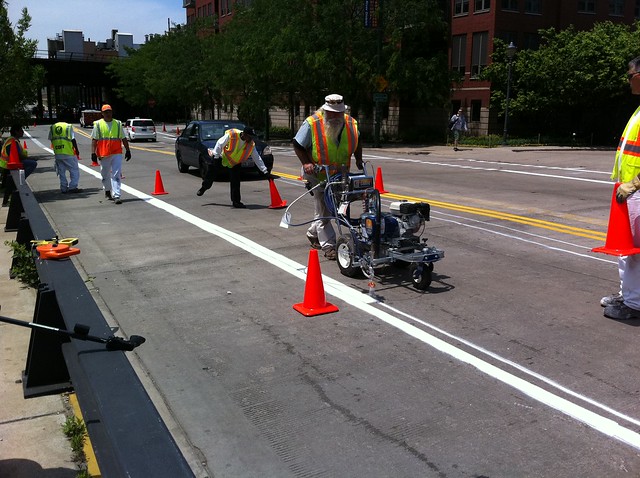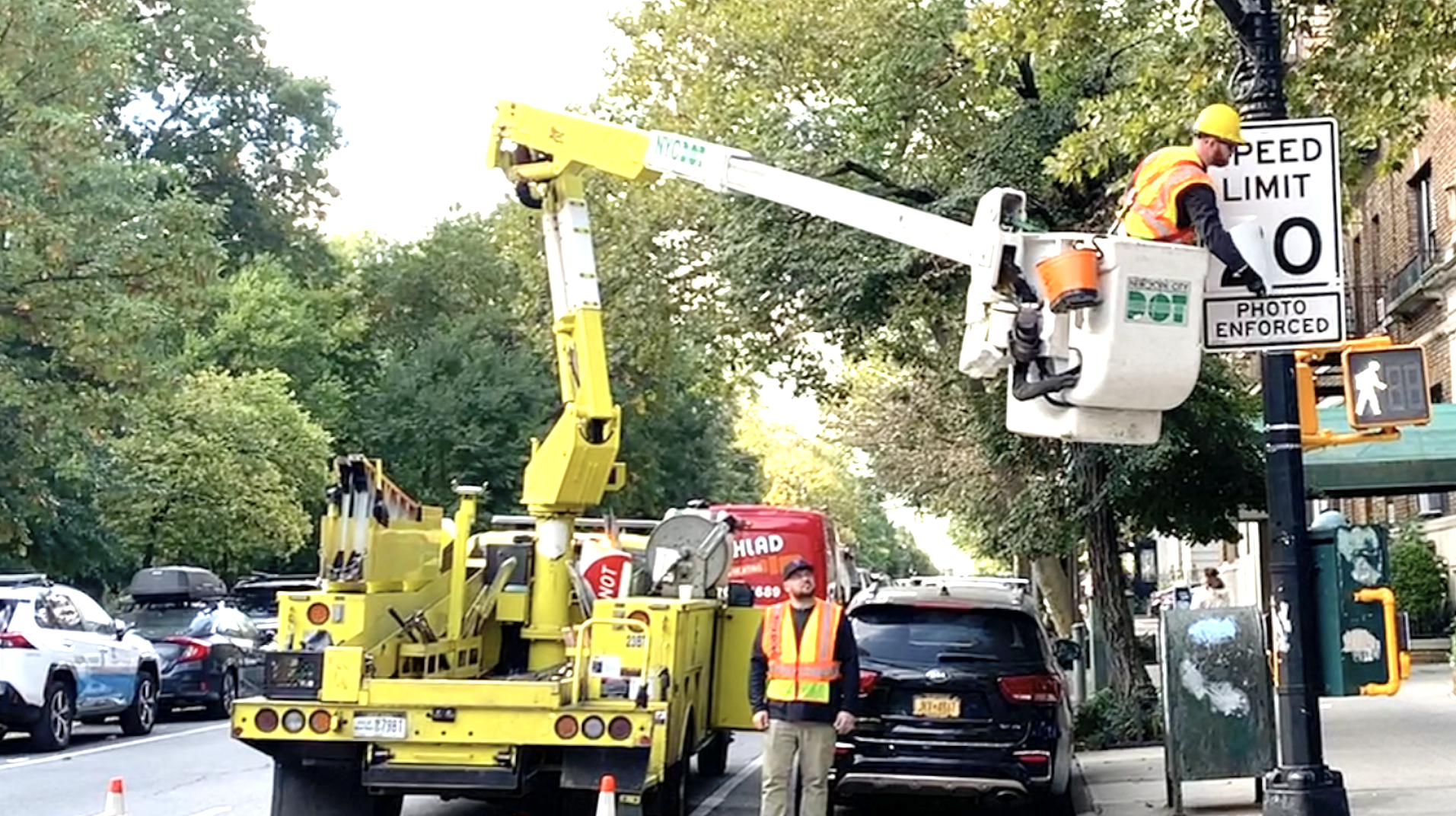
The Chicago Department of Transportation has nearly reached Mayor Rahm Emanuel's much-ballyhooed goal of building 100 miles of buffered or protected bike lanes during his first term. CDOT staff at last week's Mayor's Bicycle Advisory Committee meeting said that they've striped 83 miles of the better bike lanes so far, and plan to surpass the 100-mile mark next spring.
2014 saw substantial progress made on building out the Streets for Cycling Plan 2020. 34 miles of buffered or protected bike lanes were striped this year, and now such lanes exist in 38 of the city's 50 wards. As in prior years, almost all of these bike lanes have been buffered, rather than fully protected: This year, 30.75 miles of buffered lanes, and only 3.25 miles of protected lanes, were installed. Another nine miles of streets saw sharrows or conventional bike lanes added in 2014.
An additional 31.5 miles of buffered or protected bike lanes have been designed, and are planned for installation by the end of spring 2015 -- giving the city a grand total of 114.5 miles of buffered or protected bike lanes.
Additional greenways, curb separated bikeways, and other safety improvements continue to be coordinated with the city's ongoing street resurfacing projects. Yet work on some street could always be coordinated better, as with the recently repaved stretch of Garfield Boulevard between King Drive and the Dan Ryan Expressway. That project also included bulb-outs and improved pedestrian crossings, but bike lanes remain only a future possibility. Garfield, from Western Avenue to King Drive, is marked as a "Crosstown Bike Route" in the Streets for Cycling Plan.
A neighborhood greenway is being studied along 97th Street, west of the Dan Ryan and the Red Line's 95th Street station. If it's completed, the greenway would include a contraflow bike lane along Lafayette, between 95th and 97th, to link the bikeway to the busy station.
Unfortunately, Chicago's record of bike fatalities in 2014 has been much worse than in 2013. Since September, another bicyclist died after a crash at Lincoln Avenue and Addison Street, due in part to a speeding driver. Eight bicyclists have been killed so far this year in Chicago, compared to three fatalities in all of 2013.
CDOT's education and outreach program, the Bicycle Ambassadors, had another busy year across the city. During the 2014 season, they reached 83,000 people at 650 events (including 212 school events at 108 schools), gave 2,200 citations at 150 enforcement events, fitted 1,600 helmets, and visited 154 park district day camps.
As Streetsblog reported earlier, CDOT will try out a new snow removal strategy on protected bike lanes this year, and CDOT staff at the meeting elaborated on their plans. On "snow emergency" streets, where on-street parking is prohibited after snowfalls, bollards have been removed for the winter to allow the Department of Streets and Sanitation to more effectively clear snow from curb to curb. On other streets, bollards have been left in place and CDOT will use narrower vehicles to clear the protected bike lanes.
CDOT has already done outreach at locations where neighboring property owners have made a habit of dumping snow in bike lanes in recent winters (notably downtown, along Dearborn and Kinzie). CDOT aims to have a more proactive response to snow this year, and will work with Streets and Sanitation to improve operating procedures and ensure better bike lane conditions.


